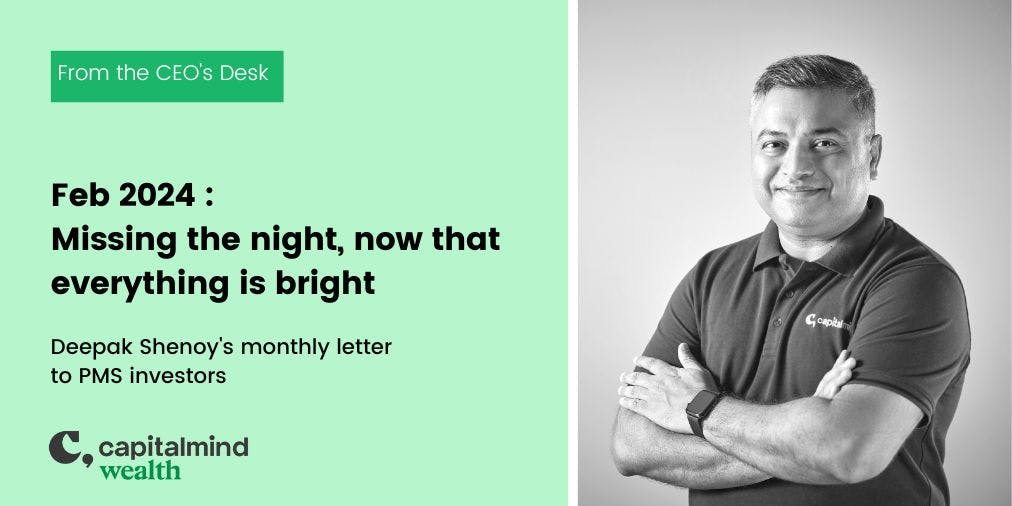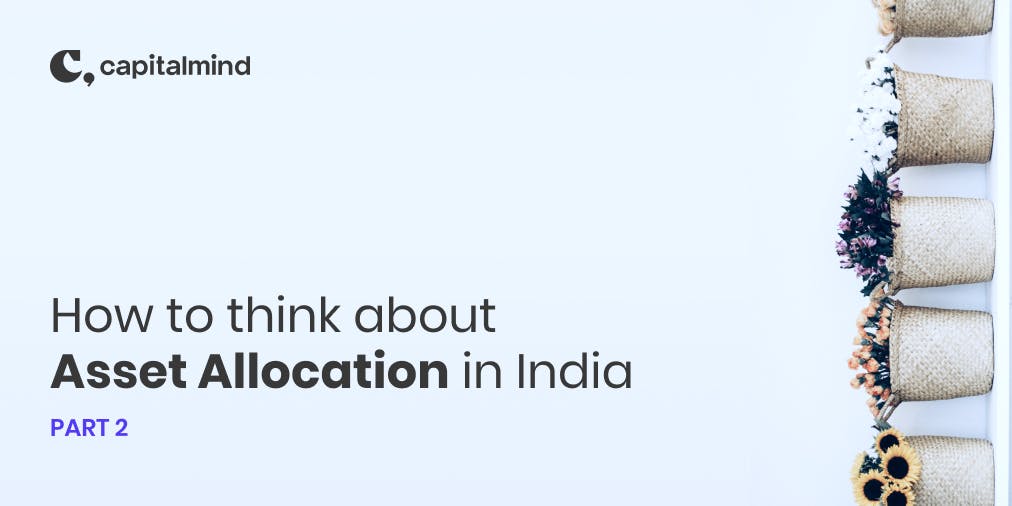(category)General
Hidden Gems: Ten lesser-known Investing books You need to readHidden Gems: Ten lesser-known Investing books You need to read
Discover ten lesser-known investment books that offer unique insights and perspectives to enhance your financial knowledge. From exploring the role of luck and skill in investing to understanding the biological underpinnings of risk-taking, these unconventional reads will challenge your assumptions and provide valuable ideas to elevate your investment strategy.
Anoop Vijaykumar•

Success Equation: Untangling Skill and Luck in Business, Investing and Sports by Michael Mauboussin
Predict the following three scenarios:
- The outcome of a tennis match between the winner of your Housing Society tournament and Roger Federer
- Total winnings from ten tries on a casino slot machine
- Higher returning portfolio after 1-year, one by you, the other by Warren Buffett
All activities fall on a continuum from pure skill (Federer versus an amateur) to pure luck (playing a slot machine). Something involves at least some skill if you can lose on purpose. When levels of skill increase across all participants, luck becomes the dominant factor in determining the winner.
Consider this intuitive equation:
Estimated True Average = Grand Average + (1 - Shrinking Factor) * (observed average - Grand Average)
Where
Grand Average = average of all participants
The shrinking factor is the extent to which luck explains away superior performance. It ranges from 0 (pure skill) to 1 (pure luck)
Most observers make the mistake of applying a shrinking factor of 0 when estimating a fund manager or their future returns based on recent performance.
Success Equation is only partially about investing, but it offers insight into developing a framework to incorporate the role of luck when viewing outcomes to improve decision-making. For example, basketball is more skill-dependent than American Football because of smaller team sizes and more touches per game.
It’s impossible to view a probabilistic field like investing the same after reading this book.
The Halo Effect: How managers let themselves be deceived by Phil Rosenzweig
When we praise the winning captain for being courageous and strategic in retaining an underperforming player for a crunch game and criticise that same captain after a loss a year later for not dropping an underperforming player, when we praise a company for being “true to its core” when explaining its consistent growth and criticise a struggling company for not trying new products and markets, we display our susceptibility to the Halo Effect.
For investors, the Halo Effect means that if a company’s EPS and stock price are doing well, its leadership is visionary, its culture is strong, and its strategy is brilliant. The opposite applies when the stock price languishes. And we often don’t realise that we’re incorrectly using the direction of causality.
We tend to look for simple, universal formulas for success when it’s often the result of a complex interplay of factors, many of which are outside a company’s control.
Reading through the historical coverage of companies like Cisco, Boeing, and ABB, you can’t help drawing parallels with how certain companies are spoken of today and what that might mean for their future stock returns.
I wrote about how this is one of the most underrated books on business and investing, with the live example playing out with Byju’s.
Big Mistakes: The best investors and their worst investments by Michael Batnick
Most people have heard about See’s Candies, Warren Buffett’s legendary acquisition of the high-quality Seattle-based chocolate maker that returned 8000%. Fewer people know about Dexter Shoes, his 1993 acquisition for $433M, which was eventually written down to zero after it struggled to compete with low-cost manufacturers. Worse, the deal was paid for with BRK shares, implying an opportunity cost of over $8B by 2020. Buffett wrote in his 2014 shareholder letter, “It deserves a spot in the Guinness Book of World Records as a financial disaster.”
As the title suggests, the book is a compilation of the worst investing mistakes made by some legendary investors in history. Reading through them, you realise a couple of things:
- If investment legends have a batting average far south of 100, then maybe the field is not purely a function of brains, and perhaps luck plays a part
- If great investors like these could make big mistakes, what hope do you and I stand?
- And finally, realising that for most of them, a lot of their investment greatness comes not despite but because of their mistakes, which they made sure to learn from
The Money Game by Adam Smith (George Goodman)
Most people say, George Goodman, who? His publishing under a pen name didn’t help name recognition. Instead of offering a detailed resume, it suffices to say that when Benjamin Graham considered publishing a revised edition of ‘The Intelligent Investor,’ he approached two people separately to write it: Warren Buffett and George Goodman.
The Money Game was published in 1968, but its honest insights, which are relevant today, might as well have been published in 2024.
“It has taken me years to unlearn everything I was taught, and I probably haven’t succeeded yet. I cite this only because most of what has been written about the market tells you the way it ought to be, and the successful investors I know do not hold to the way it ought to be, they simply go with what is.”
Understanding that difference, the difference between how markets ought to be and how they are is where investment performance lies.
Hence, “If thinking of this fascinating, complex, infinite, n-person process as a Game helps, then perhaps that is the way we should think; it helps rid us of the compulsions of theology.“
And my all-time favourite quote about not getting emotionally attached to your stocks:
“If you know that the stock does not know you own it, you are ahead of the game. You are ahead because you can change your mind and your actions without regards to what you did or thought yesterday.”
All investors should be required to read and reread this book.
The hour between Dog and Wolf: How risk-taking transforms us, Body and Mind by John Coates
Why do markets “crash” some days? It’s almost as if many money managers and investors woke up and decided that was the day to sell, bringing a massive supply to the market and lowering prices for themselves and everybody else.
There are simplistic ‘Fear versus Greed’ indices that indicate what phase markets are in. This book delves into the ignored physical aspect of risk-taking that drives much market behaviour.
“Financial risk-taking is as much a biological activity, with as many medical consequences, as facing down a grizzly bear.”
“When reading of the outbreak of war, for example, or watching stock prices crash, the information provokes a strong bodily response: you inhale a quick lungful of air, your stomach knots and muscles tense, your face flushes, you feel the thump, thump of a heart gearing up for action, and a thin sheen of sweat creeps across your skin. We are all so familiar with these physical effects that we take them for granted and lose sight of their significance. The fact that information, mere letters on a page or prices on a screen, can provoke a strong bodily reaction, can even, should it create uncertainty and stress, make us physically ill, tells us something important about the way we are built. We do not regard information as a computer would, dispassionately; we react to it physically.”
John Coates is a former Wall Street trader who transitioned into becoming a neuroscientist and applied physiologist. He worked at prominent financial firms like Goldman Sachs, Merrill Lynch, and Deutsche Bank before retraining in physiology and neuroscience at the University of Cambridge. This book explores the changes inside our bodies when we perceive opportunity or danger, how that translates to investment actions, and how hormones like testosterone and cortisol can induce “irrational exuberance” or pessimism in traders, contributing to market bubbles and crashes. How men, especially in their 20s and 30s, are more susceptible to their biologies when it comes to taking or avoiding risk.
Not a book you’ll find on most investment reading lists, but it will do things:
- Help explain why the repeating cycle of bubbles and busts is a side-effect of our biologies, which means they are unlikely to go away anytime soon
- Why recognising when we are most compromised, biologically speaking, can help us avoid making big investing decisions and potentially improve our performance over the long term
How to make money in stocks by William O’Neal
This is the most mainstream investing book on this list, and it isn’t on this list because I think the CANSLIM method of stock-picking described by William O’Neal is the silver bullet to great investing. Nothing is.
However, it offers an overall framework for examining the markets and the implications of stock price movement. It also drives home the importance of applying a consistent framework of rules to buy, hold, and sell stocks.
“Bear markets usually end while business is still in a downtrend. The reason is that stocks are anticipating, or “discounting,” all economic, political, and worldwide events many months in advance. The stock market is a leading economic indicator, not a coincident or lagging indicator, in our government’s series of key economic indicators. Bull markets usually top out and turn down before a recession sets in. For this reason, looking at economic indicators is a poor way to determine when to buy or sell stocks and is not recommended.”
I’ll be a heretic and say that the specific rules almost don’t matter as long as you can stick with them consistently enough to be the broken clock that is right twice a day. Of course, it helps to test the rules you’re considering applying.
More than you know: Finding financial wisdom in unconventional places by Michael Mauboussin
I could easily make a must-read list of only Michael Mauboussin’s writings. His ability to distil complex concepts so that regular folks can understand them is unparalleled. More than You Know is another such book.
“More than you know’s premise is simple to explain but devilishly difficult to live: you will be a better investor, executive, parent, friend - person - if you approach problems from a multidisciplinary perspective.”
“The SFI-inspired idea that has most deeply influenced me is viewing the stock market as a complex adaptive system. Embracing this mental model compelled me to revisit and question almost everything I learned in finance: agent rationality, bell-shaped price-change distributions, and notions of risk and reward.”
The book consists of independent essays grouped into four categories: investment philosophy, psychology of investing, innovation and competitive strategy, and science and complexity theory.
“The best long-term performers in any probabilistic field, such as investing, sports team management, and pari-mutuel betting, all emphasise process over outcomes.”
“Perhaps the single greatest error in the investment business is a failure to distinguish between the knowledge of a company’s fundamentals and the expectations implied by the market price.”
I’ve not encountered the idea of circumstance-based categorisation over attribute-based categorisation anywhere else. An example of attribute-based categorisation is buying when P/E multiples are low. Still, historically, this approach has not performed well, implying it’s not a valid theory for generating superior long-term results. Circumstance-based categorisation, on the other hand, tells practitioners what to do in different situations.
This book will challenge conventional investment thinking in many ways—all good. As a side note, read everything by this author.
Engines that move markets: Technology investing from Railroads, the Internet and beyond by Alasdair Nairn
There is general breathlessness about all things AI currently. Be it the makers of the picks and axes like Nvidia, ARM, AMD, or the magic-makers themselves, OpenAI (Microsoft), Anthropic (Amazon), Google, Meta, and the point applications of said magic in the form of Perplexity and so many more.
Analysts have been falling over themselves pointing out the impact on world GDP from these transformative technologies:
- Goldman Sachs estimates that generative AI could raise global GDP by 7% (around $7 trillion) and boost annual productivity growth by 1.5 percentage points over a 10-year period of widespread adoption.
- McKinsey estimates AI has the potential to deliver around $13 trillion in additional global economic activity by 2030, amounting to 1.2% higher annual GDP growth.
- The good folks at Ark Invest went several steps further. They estimated that “a subset of technologies like AI, robotics, energy storage and blockchain could deliver a “transformational acceleration” in economic growth, with the potential for global GDP to increase over 130% from current levels by 2030.”
Engines that Move Markets takes a detailed look at past technological breakthroughs and how they played out. What happened in the past when new technologies with similar transforming potential arrived on the scene? How did investors and the media react at the time? Who ended up as winners and losers from those episodes?
Historical patterns have been consistent in railroads replacing canals, automobiles replacing horse-drawn carriages, telephones replacing the telegraph, semiconductors transforming computing, and the Internet replacing brick-and-mortar retail.
“First, a new invention is greeted with scepticism from incumbent technology and potential new investors. That scepticism is gradually replaced with enthusiasm as businessmen come to appreciate the sales potential of the new technology. Soon, new entrants are flocking to the market, and venture capital funding is made available. Companies are started; almost all do well (in terms of share price) in the market on a tidal wave of enthusiasm. So far, so good, but as the technology begins to mature, a sense of realism sets in. Inevitably, for some, cash runs out. Companies begin to fold, only the strong survive and naive investors lose money in the huge rationalisation. Pessimism begins to pervade the marketplace,e and stock prices fall across the board. Eventually, the market stabilises.”
Read this book to build your framework for improving your chances of avoiding investing in the next pets.com.
The Art of Execution: How the world’s best investors get it wrong and still make millions by Lee Freeman-Shor
There are thousands of books about identifying great investments so you can make several times the return. Very few discuss what to do once you’ve bought an excellent investment, which promptly falls from your buy price. This is one of those books.
Unlikely to win any literary awards, it’s a short read written by an asset allocator responsible for allocating to a large sample size of investment managers. The book is about the recurring patterns emerging from the data that differentiate successful money managers from unsuccessful ones.
The author’s selection set comprised reputed money managers with outstanding educational credentials and all indicators of the superior intellect we associate with superior investment performance. However, their performance led the author to several unintuitive conclusions.
Consider my takeaways from the section on how different investors dealt with a losing investment:
- The best investors are wrong more than half the time. The key to their success lies in what they do after they enter an investment. The HOW of investment execution matters more than the WHAT to buy.
- On the losing side, there are two categories of successful investors: “Assassins”: live and breathe Buffett’s rule #1: “never lose money”. Have clear rules to sell at pre-determined losses (ranging between -20% and -33%) or after a certain amount of time (opportunity cost)
- “Hunters” are entirely different. They don’t go all-in on a stock to begin with. When it falls, they buy more if their thesis holds. They also sell when they lose conviction. Hunters are not to be confused with “Rabbits”...
- “Rabbits” were the worst performers in the analysis. When losing, they stay with their original hypothesis, refusing to change their minds. But they do nothing as the stock falls. When explaining performance, they often ignore black-swan events with “If it was not for...” Don’t be a rabbit.
Read this unsexy book to understand the importance of execution beyond just idea and thesis generation.
Happy Money: The Japanese art of making peace with your money by Ken Honda
The title tells you this book is not about making your money grow. From my experience, people with a healthy and objective relationship with money tend to be the exception. Most of us carry around perceptions and reactions to money from circumstances from several decades ago.
Suppose Money IQ is about understanding rational concepts like the time value of money, compounding, asset classes, costs, and taxes. In that case, Money EQ is the emotional intelligence required to deal with one’s reactions toward money. You could argue that you need both for a Happy Money life and more EQ than IQ. Most money mistakes are mistakes of emotion made by intelligent people.
The book discusses the eight money personalities and how they translate to our behaviours with money, whether we are earning it or spending it.

The steps to “Happy Money” involve:
- Shifting out of the scarcity mindset
- Forgiving and healing money wounds
- Don’t compare, trust life
- Understand Wealth as “stock” and “flow.”
- Find the right tribe
I wrote a longer post on the core concepts of the book. I recommend reading the book though.
Investing is complex and ever-evolving, and the key to long-term success lies in continual learning and adaptability. By venturing beyond the well-trodden path of classic investment literature and exploring lesser-known books like the ones featured in this article, you can expand your knowledge base, challenge your assumptions, and gain new perspectives on the art and science of investing. Whether you’re a seasoned pro or just starting on your investment journey, these ten books offer valuable insights that can help you navigate the ups and downs of the market with greater skill and confidence. So why not add a few of these hidden gems to your reading list and see how they can enrich your understanding of the fascinating world of investing?
Related Posts
Make your money work as hard as you do.
Talk to a Capitalmind Client AdvisorInvesting is not one size fits all
Learn more about our distinct investment strategies and how they fit into your portfolio.
Learn more about our portfoliosUnlock your wealth potential
Start your journey today



